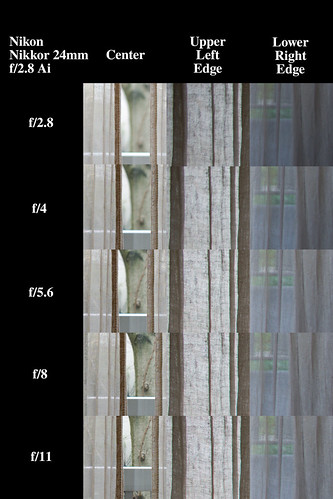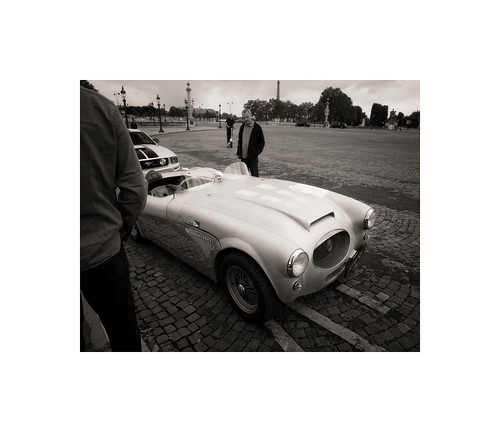Four years ago I wrote a little entry where-in I bemoaned field curvature that I found in a pretty little Nikon Nikkor 24m f/2.8 Ai. This was "confirmed" in images shot at or near infinity that were distinctively soft in the extreme corners of the frame.

Since then I've thought a lot about that blog entry and the pretty optic in question. I couldn't believe that Nikon would design a lens with that much field curvature. Certainly, there had to be some "reasonable" explanation, or so I posited.
Some time between then and now I acquired a very low mileage (ie: <700 click) Sony A7 full frame light grabbing mirrorless monster. While this is only the Mark I version of a long line of great Sony 24 mpixel cameras it really performs. The sensor is very quiet (ie: no noise) and is far sharper than any Canon DSLR I ever used (and I used a lot of them).
If I weren't already wedded to the super small very light NEX/A5000/A6000 APS-C series of Sony cameras (which also outperform any Canon DSLR I ever used), I think I'd be sorely tempted to trade it all in on more Sony Full Frame Insanity.
Which leads me back to the Nikkor 24mm. I finally found time to mount it up on the Sony A7 using a straight-thru adapter and point the lens at a fine-detailed subject. The fine-detailed subject just happened to be our daylight back-lit apartment gaze curtains.
Setup -
- Sony A7 - ISO50, 2 second timer, in-camera levels used to square the whole plot up
- Manfrotto tripod - it's capable of securing an 8x10inch view camera, so it's sturdy enough for this
- Nikon Nikkor 24mm f/2.8 Ai - shot from f/2.8 through f/11
- Rawtherapee RAW to jpg conversion - Auto-Match function, but nothing further (ie: NO Capture Sharpening - that will be in a future blog entry)
Comparison -
Here is the scene setup. It's just a pair of closed gaze scrims in our apartment. The details are interestingly small, so therefore useful for this kind of "wee look-see." The center section, upper left corner, and lower right corners were used in the comparison.

[As always, click on the image and look at it to 100percent file size to see whatever there is to be seen.]

Comments -
Considering just the Center images, f/2.8 looks a bit soft. Is it the lack of contrast? Or perhaps a bit of spherical aberration? It's not bad to my eye, but it's certainly softer and less contrasty than at f/4 or anything further south than that. I'll have more to say about this, too, in a future post.
Looking at the question of field curvature, I feel I learned an important lesson. From f/2.8 I can see that the extreme corners of the frame are sharper than they ever were with the APS-C systems used with a Lens Turbo II focal reducer. The corners get sharper from there on down through f/11.
So, what did I learn? I learned that I can't just slap a lens on a focal reducer and expect it behave the same way a 35mm manual focus lens would on Full Frame. There may be important changes to the way an image is rendered. It's worth the time to test and evaluate something without drawing any early, hard, fast conclusions.
I need to update that old post to point out that "field curvature" is not necessarily a question of the lens. In this case, the Lens Turbo II focal reducer induced field curvature when used with the Nikon Nikkor 24mm f/2.8 Ai lens.

